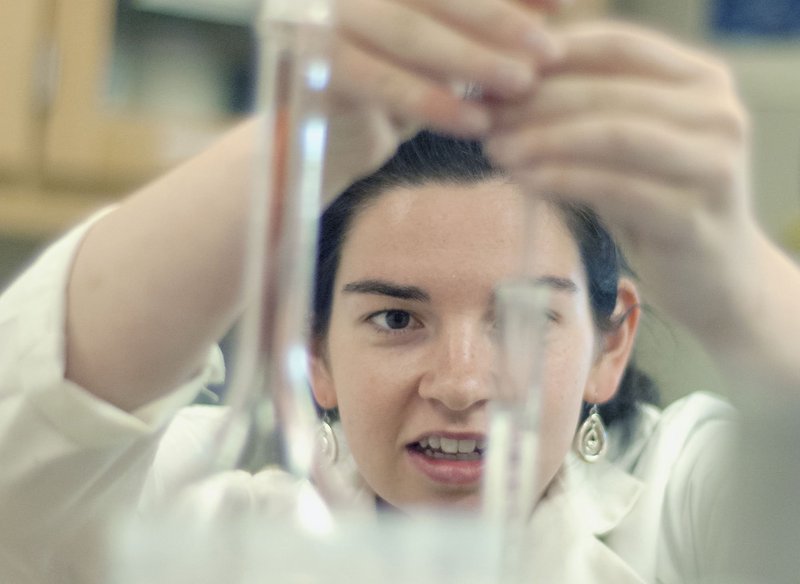DAMARISCOTTA – As part of continuing to dig out of the economic upheavals of 2008-2009, Maine and other economically challenged states may be hearing and reading similar messages.
Where Maine is concerned, the content is far from unfamiliar. It hits squarely on causes of and challenges to worker employability, the unemployment rate and a tenacious skills gap between current and future workforce needs.
For states like Maine that are having a difficult time fully rebounding from the financial tumult of 2008 and 2009, could anything be more important than proactively, yet thoughtfully with data in hand, closing this skills gap? If Maine’s economy is going to revitalize itself, this gap must be closed.
National and Maine-based reports reinforce one another on steps to reinvigorate state economies and close skill gaps. Here are five key take-aways from these reports, all worth paying attention to:
• Education really counts. Across all states, workers with an associate degree or some college lost 1.75 million jobs because of the recession and have regained 1.6 million jobs in the recovery. At the same time, workers with a high school education or less lost more than 5.6 million jobs during the recession — and have continued to lose jobs during the slow recovery.
This pattern can be found in Maine. According to a very recent report (EARN, August 2013), those states with well-educated workers attract well-paying businesses, while those states without a well-educated workforce are going to continue to slide economically.
• The action is in the states. State and regional economies are becoming the economic engines of this country.
First, any enduring success with a national recovery rests on the ingenuity of states. Second, and certainly related to the first, successful state recovery is being built around a different kind of economy. Data tells us that states recovering most quickly from the 2008-2009 economic shake-up are investing in the education and worker skills needed for a knowledge-centric, innovation-based economy.
• Pay attention to the green jobs sector. It is an important driver of an innovation economy. States with more green-oriented companies, whether product-, service- or research-oriented, have generally fared better in the current economic downturn.
Despite Maine’s long-standing commitment to the environment, growth in the expanding green jobs sector has not been particularly robust in the state as a whole.
• Recognize the critical role of STEM education. Science, technology, engineering and mathematics education has a critical role in catalyzing state economies and workforce readiness. Workers fluent in the STEM fields, whether we are talking about technical work, health care, education or professional careers, will be more job- and career-ready than those who are not.
High-tech, energy-sector and emerging specialized manufacturing industries — all areas of current job growth — demand highly skilled and highly educated workers. The mantra of this century is, “Let’s keep learning!”
• K-16 STEM education, however, is due for a rethink. New areas of employment are going to require a newly reconfigured knowledge base of subject matter and interdisciplinary emphasis.
For example, sustainability science, highly related to the green jobs sector, has yet to penetrate K-16 education fully in the U.S., though there are some limited examples in Maine to help guide the way.
Sustainability science is at the forefront of knowledge needed for workers involved in creating new products, materials and services necessary for a world of diminishing resources but advanced needs.
The work of this century, a mainstay of all state economies, is to identify and create sustainable solutions to environmental, climate, health, agricultural, water and manufacturing issues. Maine can learn from Finland, where Education for Sustainable Development begins in the early elementary grades with sustainability and sustainability science as a core area of knowledge.
Important work needs to be done in Maine on these five key points. Policymakers, parents, educators and all of Maine’s citizenry must focus on economic and workforce realities of today. They are different and this difference is not going away. The shift to an innovation-based economy will continue full tilt.
The three E’s in Maine — educators, economists and employers — need to meet with state policymakers and map out an agenda to catalyze growth and mobilize a solid commitment to closing the skills gap in Maine and revitalize our economy.
All of us must think outside of the proverbial box for big and small solutions, as more of the future becomes more of the now. And, yes, it is only going to become more so.
Jean Moon is president of the Tidemark Institute in Damariscotta, which is dedicated to making a difference in STEM education.
Send questions/comments to the editors.



Success. Please wait for the page to reload. If the page does not reload within 5 seconds, please refresh the page.
Enter your email and password to access comments.
Hi, to comment on stories you must . This profile is in addition to your subscription and website login.
Already have a commenting profile? .
Invalid username/password.
Please check your email to confirm and complete your registration.
Only subscribers are eligible to post comments. Please subscribe or login first for digital access. Here’s why.
Use the form below to reset your password. When you've submitted your account email, we will send an email with a reset code.